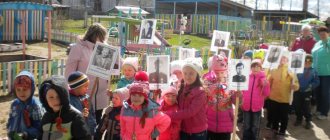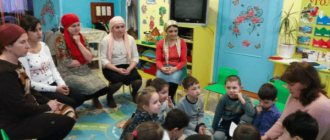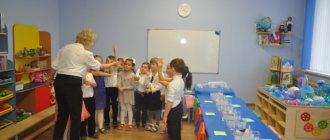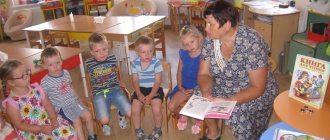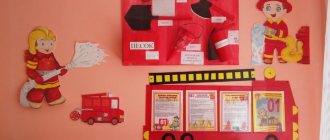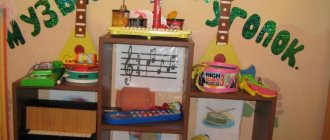Plan of events for the celebration of “Tolerance Week” in the preparatory group
Goal: To instill in children respect for the national cultures of different peoples of Russia.
Tasks:
— to cultivate in children friendliness, the desire for self-help, the ability to rejoice in the successes of others, the development of empathy and compassion;
- create a positive emotional mood in children, a cheerful, cheerful mood, feel the joy of movement;
- develop motor skills: strength, agility, speed, flexibility, endurance, coordination, communication skills for children to communicate with each other;
- broadening the preschooler’s horizons, understanding the world around him;
- formation of a harmoniously developed active personality, combining spiritual wealth, moral purity and physical perfection;
- introducing children to different nationalities, their customs, traditions, culture, understanding and respecting the customs, views and traditions of other people.
Motto:
The main thing is together!
The main thing is to be friendly!
The main thing is with your heart burning in your chest!
We don't need indifferent people in our lives!
Drive anger and resentment out of kindergarten!
| No. | Educational area | Event | Participants |
| During the week: - holding the “Let's Help the Kids” campaign (help with dressing, making gifts); - reading fiction about friendship (“The Braggart Hare” by N. Nosov, “Patch” by A. Akim, “My Relatives” by E. Charushin, “Little foxes.” Memorizing the poem “Unity Forever” by Natalya Maidanik);- watching thematic cartoons;- holding games of different nations (Russian, Tatar, Khanty, Tajik, Moldavian, etc.);- listening to national melodies. | |||
| 05.11.2013 | |||
| 1 | Communication | Thematic conversation “We are different, but we are friends!” | Children, teachers |
| 2 | Reading fiction, socialization | Design of the thematic book exhibition “We are all a friendly family!” | Children, teachers |
| 3 | Artistic creativity | Campaign “Let's live together!” | Children, parents, teachers |
| 4 | Consultation for parents “Tolerance, what is it?” | Parents | |
| 06.11.2013 | |||
| 5 | Communication, music, reading fiction | Direct educational activities on the topic “What is good?” | Children |
| 6 | Music, communication | Round dance games “Become a part of the round dance.” | Children, teachers |
| 7 | Physical Culture | Physical education "Cheerful Company" | Children, teachers, parents |
| 8 | Booklet for parents: “How to cultivate tolerance.” | Parents | |
| 07.11.2013 | |||
| 9 | Communication, work, socialization | Creation of the “Screen of Good Deeds”. | Children, teachers |
| 10 | Artistic creativity (drawing, applique). | Practical workshop: “Smile”, making “Give a smile to a passerby” stickers. | Children, teachers |
| 11 | Communication | Didactic exercise “Name your neighbor affectionately.” | Children |
| 12 | Replenishment of the corner for parents with the heading “Do good”, “How to help a child become kind”. | Parents | |
| 08.11.2013 | |||
| 13 | Artistic creativity (modeling). | NOD "Friendly guys" | Children |
| 14 | Communication, health, physical education, music | Final event “If you go on a journey with a friend.” | Children, teachers. |
What is tolerance?
In 1995, the General Conference of UNESCO approved the Declaration of Principles of Tolerance, which was signed by 185 countries, including Russia.
According to this document, tolerance is respect and acceptance of the diversity of cultures, peoples and customs . This is a rejection of violence and discrimination against people who differ from us in skin color, religion and other characteristics.
The basic principle of tolerance is: “I see that you are different and different from me, but I accept and respect it.”
To be tolerant does not mean to be indifferent and indifferent to what is happening in the world. There should be no tolerance for crime, rudeness, bullying and violence.
Tolerance is an active life position, recognition of the right to individuality. This is a desire to help people, to make the world a better place.
A tolerant person has such personality characteristics as mutual respect, goodwill, compliance and sociability.
The problem of tolerance in Russia and in the world
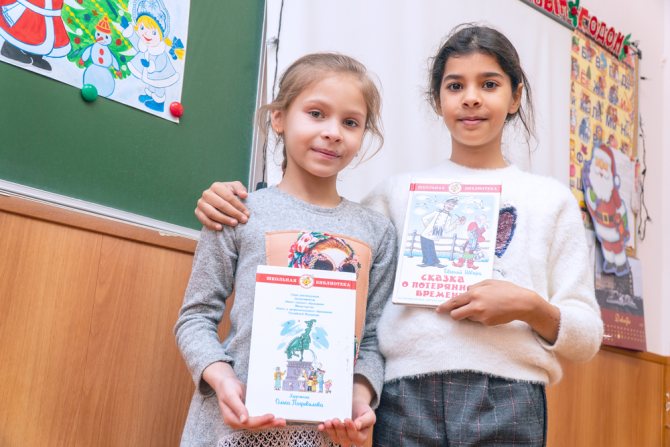
The issue of tolerance and respect is now one of the most discussed in the world. This is not surprising, since national and religious differences are increasingly becoming the cause of conflicts between people living in the same territory.
In Europe, for example, due to the large flow of migrants from the Middle East, cases of attacks on refugees by radical indigenous people who oppose the “Islamization” of their countries have become more frequent.
And Muslim migrants, in turn, also provoke conflicts with their disdain for European traditions and shrines.
In Russia, the problem of tolerance has always been relevant. Since our country is multinational, a large number of different peoples with their own traditions and customs have long coexisted on its territory.
The division “us and them”, “us and foe” has always existed. Representatives of different cultures tried to stay apart, defending their ethnic views, often through bloody wars.
But times are changing, and people, fortunately, have begun to understand that “different” views and customs do not mean “bad.” That every person has the right to his own worldview and his own values. And this right must be respected.
“My son is a nationalist, what should I do?”
Case from practice. The mother of 13-year-old Dima came for a consultation with a psychologist. Barely holding back tears, she told the following story:
“My husband and I have always tried to raise our son correctly, the way he should. He, of course, knew from childhood that all people in the world are different. We watched cartoons with him and read books about the history of nations.
And then, imagine, I accidentally came across his correspondence on VKontakte (he, as usual, forgot to close his page), and there was such horror... It turned out that my son and two other children were bullying an Azerbaijani boy who joined their class this year. And they call him a chump, and they write all sorts of threats to him...
To say that I was shocked is to say nothing. I told my husband everything, in the evening they gave Dima a beating, and he responded: “So what’s wrong? He really is a fool! Hate him! Let him return to his village, but he has nothing to do here!”
My hands just gave up. Tell me what we did wrong? Why did our son become like this?
Typically, discriminatory attitudes in children start small. With offensive jokes towards a classmate who is unlike others. From disrespect and mockery of other people's traditions and customs. And if parents and teachers do not intervene in the situation in time, the son or daughter may join radical nationalism.
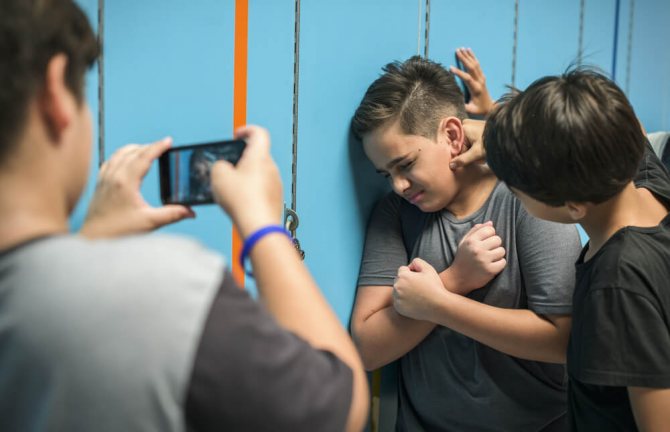
You should sound the alarm if your child:
- He began to move away from family and friends and spends a lot of time alone.
- He often watches videos on the Internet with extremist content or promoting Nazi ideas.
- Drastically changes his clothing style and appearance.
- I began to often talk about political and social topics. Expresses signs of intolerance with cliched, as if pre-prepared phrases.
- Experiences bouts of anger and uncontrollable aggression towards persons of another nationality.
What should parents do:
- Do not harshly condemn the teenager’s behavior; try to find out in a calm, confidential conversation the reason why your son or daughter supports these views. Be prepared for the fact that the situation will not change in one conversation.
- Assess your feelings: “It’s very painful and unpleasant for me that you do this.”
- If possible, limit your child’s interactions with people who have a negative influence on him.
- Seek help from a child psychologist.
The sooner a child realizes that “different, not like me” does not mean “bad,” the less likely it is that in the future he will turn into an aggressor, capable of humiliating and bullying people who are somehow different from him.
What should a child know about tolerance and respect for people?
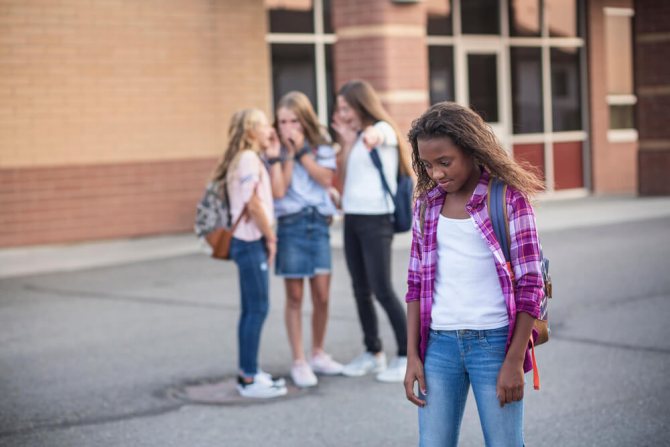
Even for an adult, the topic of tolerance is quite difficult. It's even harder to talk about this with your own child.
But the longer parents put off such a conversation, the higher the likelihood that the child will form his own beliefs under the influence of society. And there is no guarantee that he will show tolerance and respect for people of other nationalities.
When starting to discuss the topic of tolerance with a child, mothers and fathers need to keep in mind the characteristics of age.
for babies to choose playmates with the same skin color as their own.
At the same time, at 3-4 years old they already begin to pay attention to racial differences. For example, a child on the street may say: “Mom, look, this boy is black!” Or: “Why does this girl have such narrow eyes?”
Advice for parents of preschoolers:
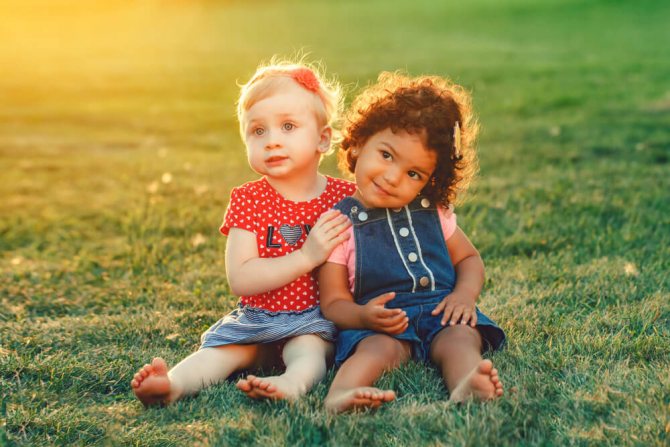
Read books and watch cartoons with your child on the topic of tolerance towards people who are somehow different from us
Discuss with your child how important it is not only to treat them with respect, but also not to be afraid to show it to others.
Here is a list of cartoons that you can watch with your preschooler.
Cartoons about racial differences:
- "Zootopia" (2016, USA).
- "Boniface's Vacation" (1965, USSR).
- “At the Port” (1975, USSR).
- “Friendship of Peoples” (2015, Russia).
Cartoons about a tolerant attitude towards children with special needs:
- “A neat story” (2014, Russia).
- “Gift” (2015, Germany).
- “About Dima” (2016, Russia).
- “Anatole’s Saucepan” (2014, France).
- “Strings” (2014, Spain).
- "Tamara" (2013, USA).
- “The Unusual Little Brother” (1995, France).
- “My brother from the moon” (2007, France).
If your child pays attention to the national or racial differences of other children, focus on this point
“Yes, this boy has really dark skin. The girl Masha from your group wears glasses, and our neighbor Asema has a narrow eye shape. We are all different, and that’s great!”
Just teach him not to speak out publicly and not to point fingers at people, this is uncivilized and impolite towards them.
It will be useful if you purchase for your child a set of dolls or figurines of different races and nationalities
And at the same time, tell us about their traditions and customs. You can also buy colorful books with pictures about the history of the peoples of the world.
Your main task is to introduce your child to a world where a huge number of people live, and they are all somehow different from each other. This will be the child’s first step on the path to kindness and a tolerant attitude towards everyone around him.
At primary school age, you can already talk with children not only about the differences between representatives of different nations and cultures, but also about the negative attitude of some people towards them - about racism and nationalism.
Advice for parents of schoolchildren:
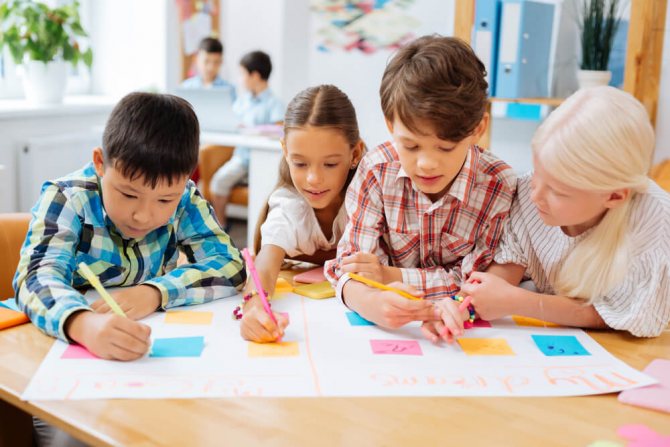
Explain all concepts in a language that is accessible and understandable to the child.
For example:
- racism is when someone hates a person just because they have a different skin color;
- Nationalism is love for one's Motherland. But it can be both good and bad. It’s good when you are proud of your country, your people and culture, but bad is when you think that only your nation is the best and begin to hate representatives of other nations;
- Discrimination is an unfair treatment, humiliation of a person because he is somehow different from you.
Discuss the issue of tolerance and discrimination with your child in the form of an active dialogue
Ask if there are children of other nationalities or children with special needs in his class and how he feels about them. Find out whether these children are being ridiculed by their classmates and whether it is fair to humiliate people for being different from us.
Visit the festivals of national cultures taking place in your city with your son or daughter
Try traditional dishes, chat with representatives of different nations. Convey to your child that diversity makes our world richer and more amazing, and the centuries-old history of every people or culture is worthy of respect. This is what happened before us and will remain after us.
Watch movies together that focus on race.
Discuss with your child what solution he sees to this issue and whether it is worth fighting discrimination at all.
Movies for family viewing:
- “Just Mercy” (2019, USA).
- “Fences” (2016, USA).
- “Alien Hate” (2018, USA).
- "Green Book" (2018, USA).
- "Skin" (2008, UK).
By adolescence, children begin to form their own beliefs and values, often under the influence of peers and public sentiment.
Unfortunately, many begin to hold discriminatory views regarding both national and other differences between people. Intolerance can develop into bullying and humiliation, and from here it is not far to nationalistic beliefs.
Tips for parents of teenagers:

- Show your child your clear position on racism and nationalism.
- Pay attention to your teenager's extracurricular life. As a rule, those children who have neither hobbies nor interests join nationalist groups.
- Teach your son or daughter not to stand aside, help the weak, and be sure to report cases of violence and bullying to adults.
Why is it so important to talk about this with children?

In 2004, an incident that was striking in its cruelty occurred in St. Petersburg. A native of Tajikistan was returning from the skating rink with his 8-year-old daughter and nephew. Suddenly a group of armed teenagers jumped out at them shouting “Russia is for the Russians!” started beating the family. As a result, the man received a closed head injury, his nephew received knife wounds, and the girl could not be saved - she died from loss of blood.
This story is far from isolated. Hatred towards representatives of other nationalities begins almost from kindergarten, when migrant children are mocked not only by children, but also by teachers.
The same atmosphere reigns in schools: Tajik and Uzbek schoolchildren are subject to bullying and violence, especially if they have language problems and difficulties with adaptation.
This is evidenced by data from a sociological study conducted in September 2022 among students of Russian schools. 33.6% of respondents confirmed that they faced humiliation and ridicule from classmates because of their national characteristics.
Our children do not live in a vacuum. They, like sponges, absorb all views, attitudes and moods in society. And they don't become violent on their own. They are driven to this by the indifference of their parents, uncontrolled access to information in the media that traumatizes children’s psyches, and ignorance of cases of bullying at school. According to a 2022 study of students aged 11 to 17, 72% of respondents reported incidents of bullying to teachers and other adults, but the situation was never resolved.
All this awakens aggression and intolerance in children, which can subsequently develop into racism and nationalism.
Therefore, the task of parents is not just to tell their children about the existence of racial, religious and national differences between people, but also to teach them to accept and respect them.
Find out if your child is being bullied by peers or other adults when you are not around! Listen to what is happening around, see where the child is and call in any situation with the “Where are my children” application.
